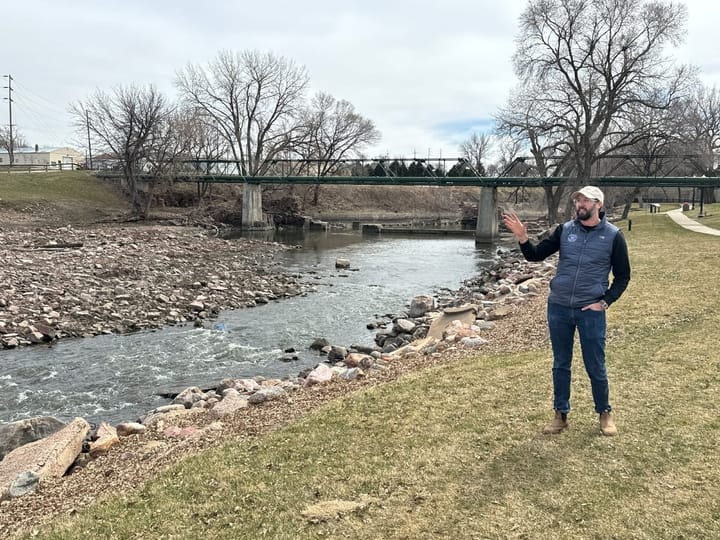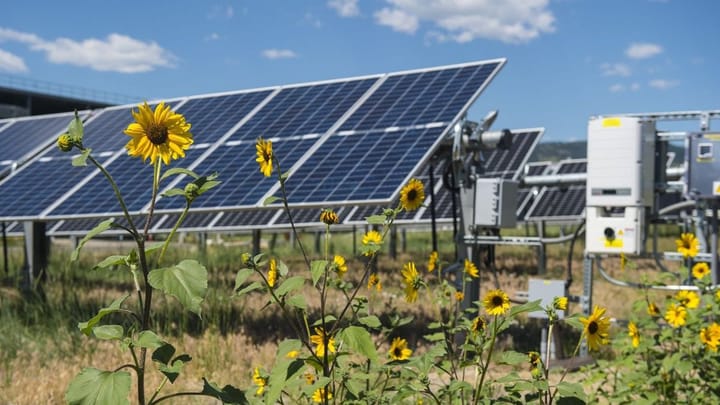$8.3B in crop insurance payouts to South Dakota farmers: A cost of climate change
Nearly 65% of federal crop insurance premiums are subsidized with federal funding.
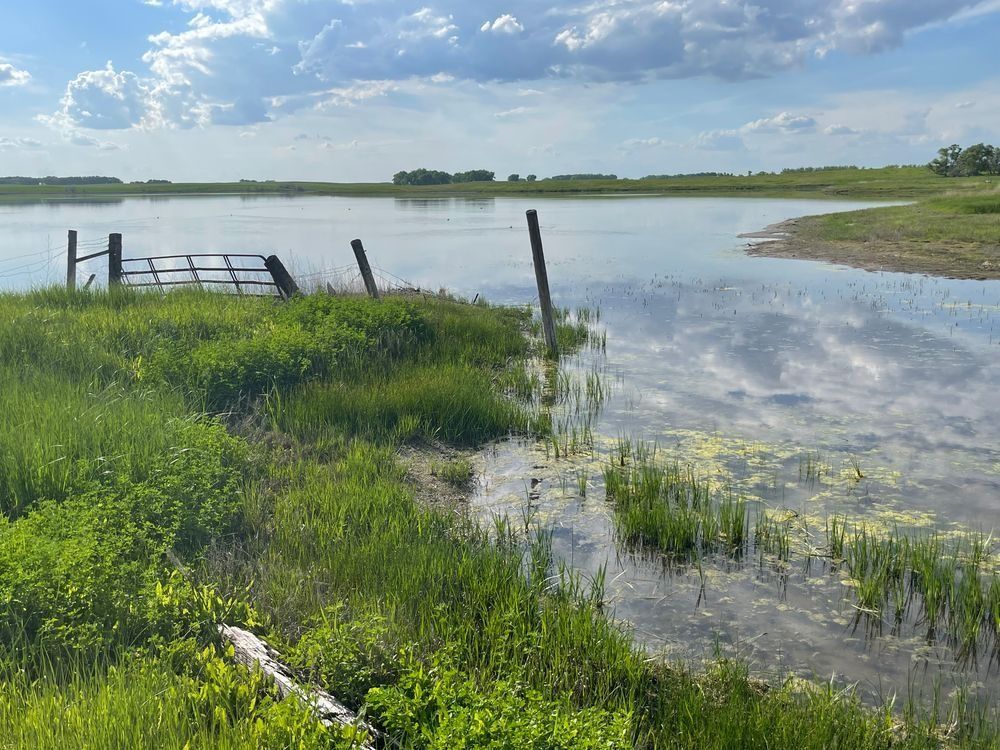
South Dakota farmers have received nearly $10 billion in payouts from the Federal Crop Insurance Corp. over roughly the past two decades, with payments specifically due to weather disasters rising significantly during that time.
Between 2001 and 2022, South Dakota was among the top states in the nation for receiving insurance payouts for crop losses due to weather disasters, a trend environmentalists have said reveals a hidden but rapidly rising cost of climate change that is increasing the frequency and severity of storms that damage crops.
Of the $9.6 billion sent to state farmers and ranchers in that time frame, more than $8.3 billion was claimed for weather-related losses due to excess moisture, drought, hail, wind or freezing temperatures, according to a new analysis by the nonprofit Environmental Working Group (EWG). The rest was for losses not related to weather.
Farmers who buy crop insurance can receive settlements anytime their crops are damaged or destroyed or when they are unable to plant, thereby eliminating anticipated income.
American taxpayers have funded a large portion of the payouts, as nearly 65% of the premiums for the crop insurance program run by the U.S. Department of Agriculture are subsidized with federal funding.
The Congressional Budget Office estimates the crop insurance program will cost taxpayers $16.3 billion in fiscal year 2023 when average U.S. farm incomes are at or near record highs. American farmers overall received $19.1 billion in crop insurance payouts in 2022, a record and far above the $3 billion paid out in 2002, according to EWG.
Critics of the USDA program, which include some environmental and tax watchdog groups, have said the crop insurance program needs reforms to reduce taxpayer support. That would increase transparency in regard to flow of funds and encourage farmers to make their operations more resilient against the long-term effects of climate change, they have said.
Renewal of the crop insurance program is part of the 2023 Farm Bill now under consideration by the U.S. Congress.
Climate change, extreme weather connected
Anne Schechinger, Midwest director for EWG and the author of the crop insurance analysis, said there is a strong correlation between rising crop insurance payouts and the increasing impacts of climate change.
"We know that these payments will keep going up, and that the program is going to be more and more expensive for taxpayers and farmers as this extreme weather gets worse," Schechinger said in an interview with News Watch.
"We’re very confident there’s a strong connection to climate change here because farms are some of the businesses most vulnerable to climate change purely because of the nature of farming."
While the USDA oversees the program, the insurance policies are sold and managed by private companies.
A previous analysis by the EWG found that a third of all crop insurance payout funds – about $33 billion over the past 10 years – have been absorbed by the dozen or so big insurance companies and their agents that sell policies and not to farmers who work the land and absorb the risk.
"The reality is that not that many U.S. farmers benefit from these programs and that the money is mostly going to these larger and wealthier farmers," Schechinger said. "And the insurers are definitely making billions of dollars every year under the crop insurance program … and that’s money coming from farmers and taxpayers that is not going to farmers."
Over the 22-year period examined by EWG, South Dakota farmers received the third-most payments among all states for losses due to drought ($4.1 billion) and excess moisture ($3.3 billion), and the sixth-most payments for hail damage ($620 million).
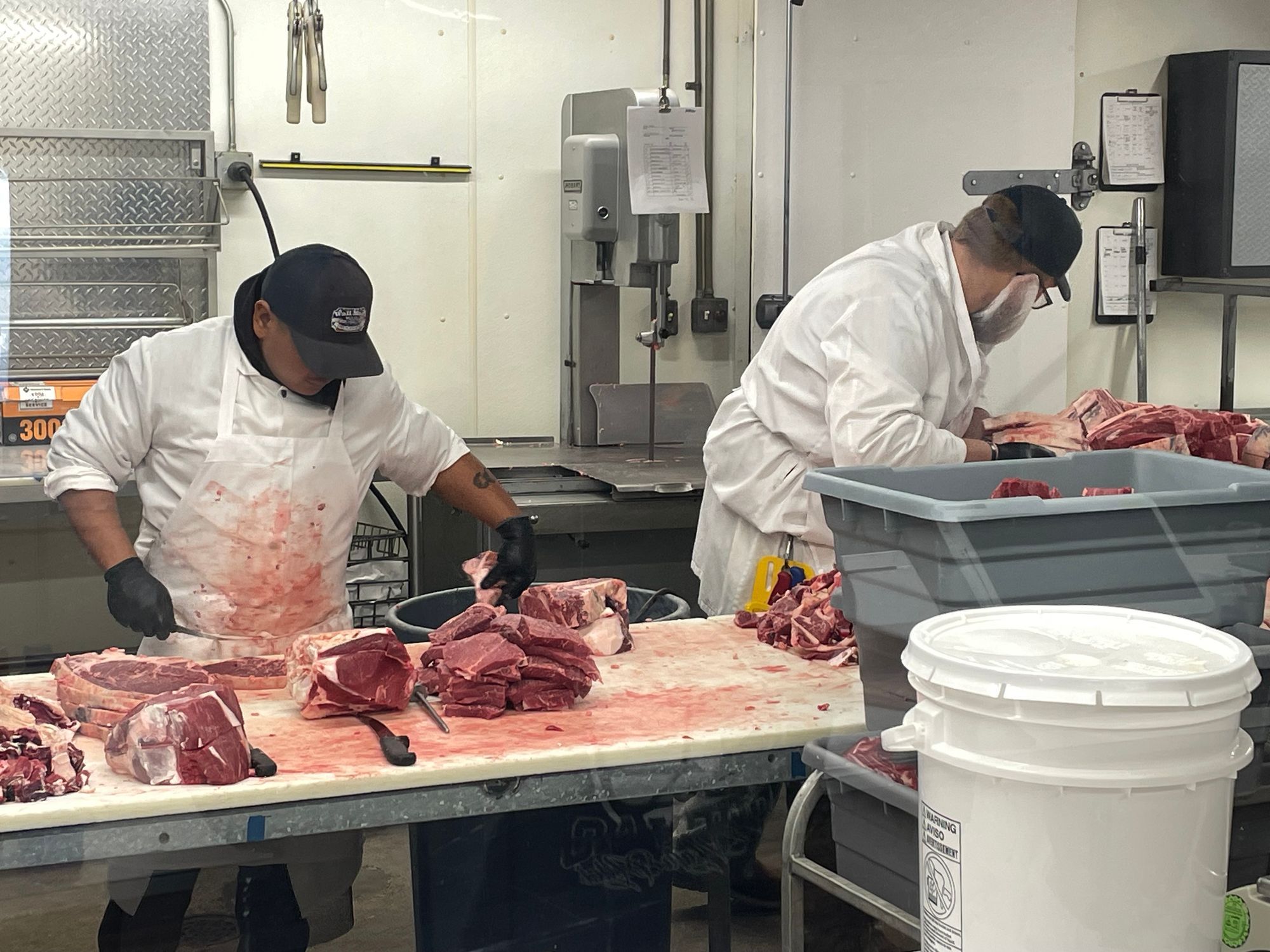
Though claim amounts varied by year and weather conditions, the overall payments to South Dakota farmers for crop losses have risen steadily over the past two decades, with sharp increases shown in the past decade: $180 million paid out in 2014, $188 million in 2015 and $1.3 billion in 2022.
Farmers rely on program for stability
Despite the rising costs and payouts, however, South Dakota Farm Bureau Federation president Scott VanderWal said the crop insurance program remains a critical component of the economic equation that allows agricultural producers to remain in business.
The need for the program remains great in South Dakota and across the country, Vanderwal said, as American farmers seek to feed the nation and world and take on great risk in an industry largely dependent on the weather for success.
"It’s so vitally important for the ability of farmers and ranchers to manage their risk," said VanderWal, who also serves as vice president of the American Farm Bureau, which is a certified agency allowed to sell crop insurance.
"When you’re so totally depending on the weather for your livelihood, with all these crops growing outside and subject to hail storms, floods and drought, you have to be able to manage that risk. And that is what crop insurance is all about."
VanderWal, who grows corn and soybeans and raises cattle near Volga, S.D., said his family has purchased crop insurance since the 1990s and received indemnity payments a few times over the years.

VanderWal said the program has saved family farms in South Dakota from financial devastation numerous times, most recently in 2019 when extreme wet weather prevented many row crop farmers from even planting a crop. USDA data show that South Dakota farmers received nearly $1 billion in crop insurance payments solely due to flooding that year.
"That was an absolutely disastrous year, and a lot of people would have failed financially if they didn’t have crop insurance," VanderWal said. "That kept us alive because the stakes are high, landlords still want to be paid, there's still overhead and machinery costs to be paid."
VanderWal said he is aware of criticisms of the crop insurance program and noted that one area of recent reform has been to crack down on potential fraud. He said the program continues to evolve, with a new pilot program underway to expand coverage of weaned calves for livestock producers.
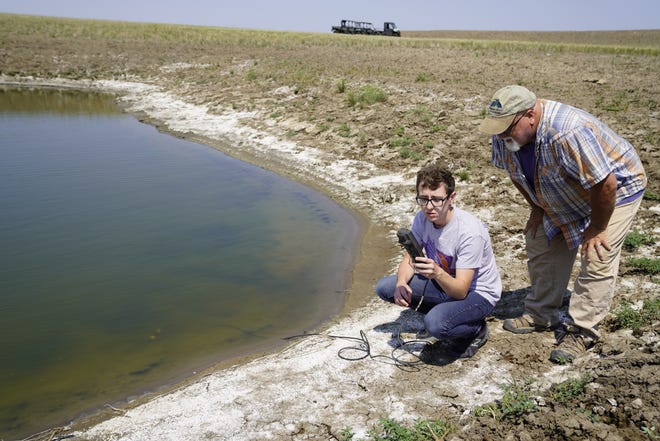
As he travels the country in support of farming, VanderWal said he continues to defend the crop insurance program and battle back against misimpressions, including that some farmers are using crop insurance to fleece the federal government and taxpayers.
"They need to know that farmers and ranchers do have skin in the game, that we're paying premiums and it’s not a freebie," he said. "There’s a perception out there that farmers get rich taking in crop insurance payments. But I can tell you that if we have a crop insurance indemnity on a field, we don’t make any money on it. It just lessens the pain and keeps you in business for the next year."
VanderWal said taxpayer subsidization of the program, long supported by Congress, is important to ensure that American farmers can stay in business during hard times and keep domestic food production viable.

"That’s the investment the American public is making to ensure that the industry that raises our food, fiber and fuel remains viable and strong so we don’t find ourselves depending on other countries for our food like we do for energy a lot of the time," he said.
VanderWal said crop insurance keeps farmers financially stable so that despite any major market shift or global crisis, America will remain strong because the public can rely on farmers to produce their food.
"These are all upheavals that cause disruptions in markets, but because we can feed ourselves we don’t have to worry about getting our food from other countries," he said. "That’s so incredibly important and part of our national security in the United States."
Payouts support farms and farm communities
Beyond individual losses caused by extreme weather, crop insurance protects entire communities that rely on farm-related spending, said Jerry Schmitz, executive director of the South Dakota Soybean Association.
"If these folks have a tremendous loss, and they aren't able to pay their bills, the grocery stores, seed stores and other local business suffer, too," Schmitz said.
According to USDA data, South Dakota was joined by North Dakota and Iowa as other Great Plains states that were considered "hot spots" for high levels of crop insurance payouts over the past two decades.
The top South Dakota counties for drought payouts during that time period were Hutchinson, Edmunds and Sully. The top counties for excess moisture payouts were Brown, Spink and Marshall.
Other factors at play
While both VanderWal and Schmitz acknowledge that damaging weather events have been more frequent and severe in recent years, they point to other possible reasons that crop insurance payouts have risen.
While EWG said only about 20% of U.S. farmers carry crop insurance, USDA data reviewed by News Watch show that participation is far higher in South Dakota. Records show that 87% of the state's 16.6 million acres of crops are insured, including 89% of corn acres and 99% of soybean acres. In general, far fewer livestock producers purchase crop insurance when compared to two-crop farmers.
Beyond that, the value of crops has risen steadily in recent years, raising the level of insurance producers need to carry in order to cover losses in a disaster and consequently raising payouts when losses occur.
Furthermore, the cost of operating a farm has increased, causing a jump in both premiums and payouts. For example, Schmitz said an 80,000 kernel bag of seed corn cost $25 when he began farming around 1980 but runs up to $400 now. A basic tractor purchased at that time for $25,000 would easily top $250,000 in 2023, he said.
Schmitz added that in recent years, farmers have faced new forms of weather challenges, including the "derecho" storm and straight-line wind event that damaged buildings in Sioux Falls and crops across eastern South Dakota in July 2022.
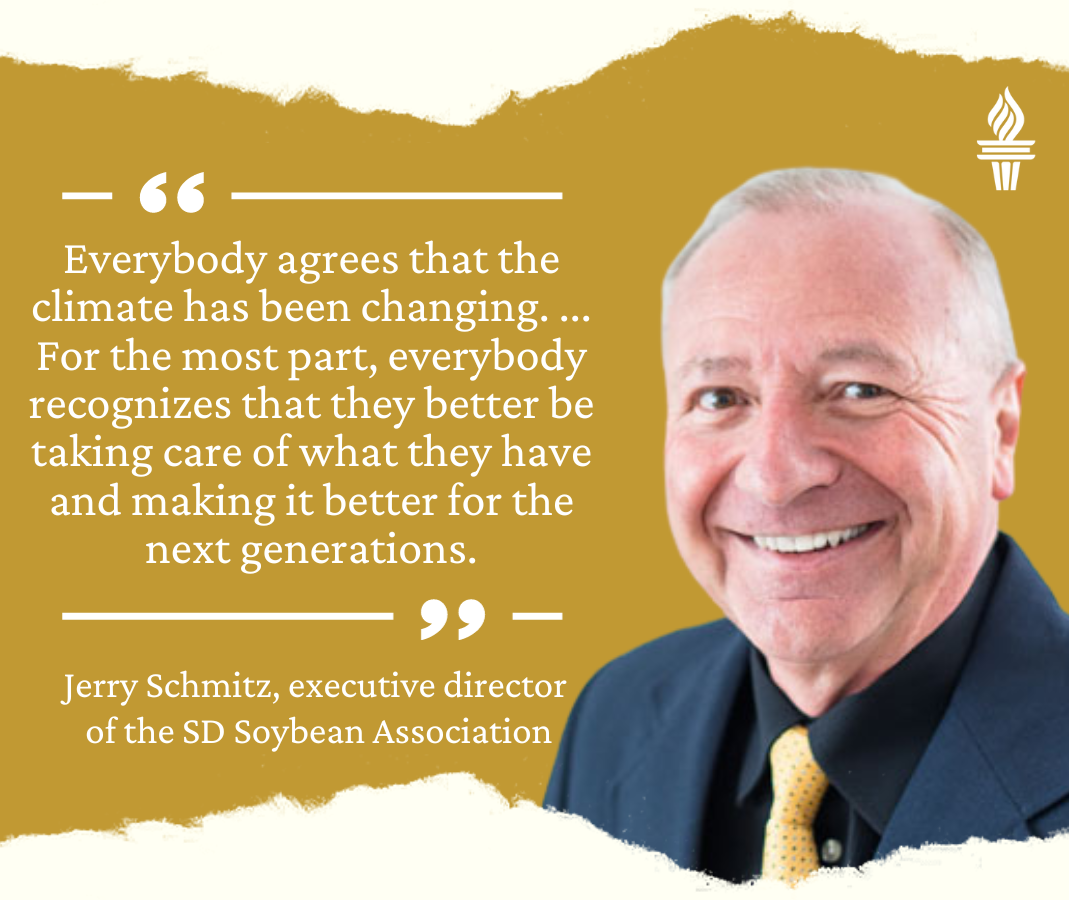
Schmitz also said the crop insurance program is critical for young farmers, who will form the future of agriculture in America. While many experienced farmers have created more stability in their operation and are more able to absorb a loss, young farmers are not as well positioned financially, he said.
"It’s especially important for younger producers just getting into the business," he said. "The older guys have been through it and built up a little equity and understand the ups and downs and can balance that. But for a young person coming in, with the debt they’ve acquired just to get into the business and suddenly they have a loss of income, it’s pretty impactful."
Taxation group seeks limits on payouts
Taxpayers for Common Sense, a Washington budget watchdog group, is urging Congress to pass two measures aimed at tightening the rules of the crop insurance program to reduce costs and increase transparency.
The group supports both the Assisting Family Farmers through Insurance Reform Measures Act and the Crop Insurance Transparency Act.
Those measures would, among other things, put limits on the payouts individual farms could receive under the crop insurance program and eliminate taxpayer subsidies for the wealthiest farmers, those who own but do not operate a farm, or those of foreign residency.
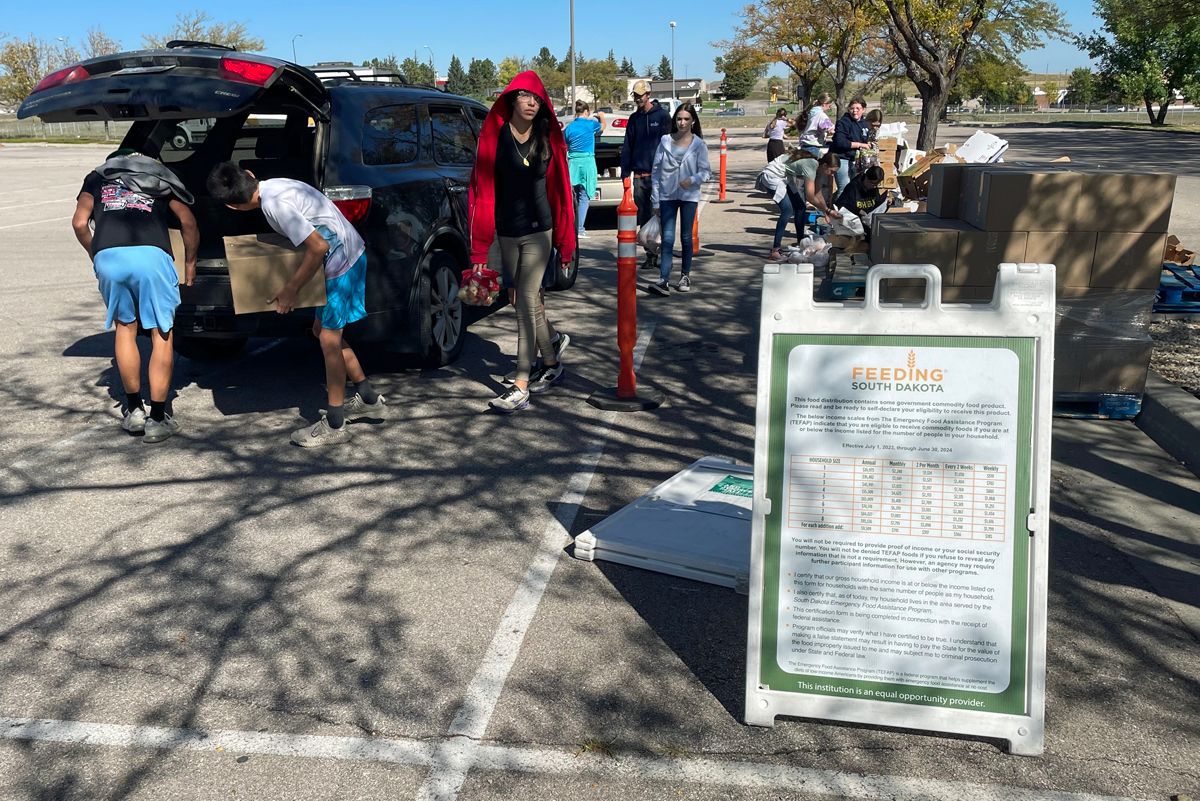
The group argues that widespread use of the crop insurance program has led to increasing prices of farmland, consolidation of farms and reduced agricultural conservation and crop diversification.
The organization further noted that federal emergency disaster declarations, enacted separately and in addition to crop insurance policies, have provided $20 billion in payments to farmers since 2018, including those who already benefited from crop insurance policies.
"Common sense reforms to the federal crop insurance program can save taxpayers tens of billions of dollars, while also benefiting beginning farmers and the environment," the group said in a September 2023 position paper.
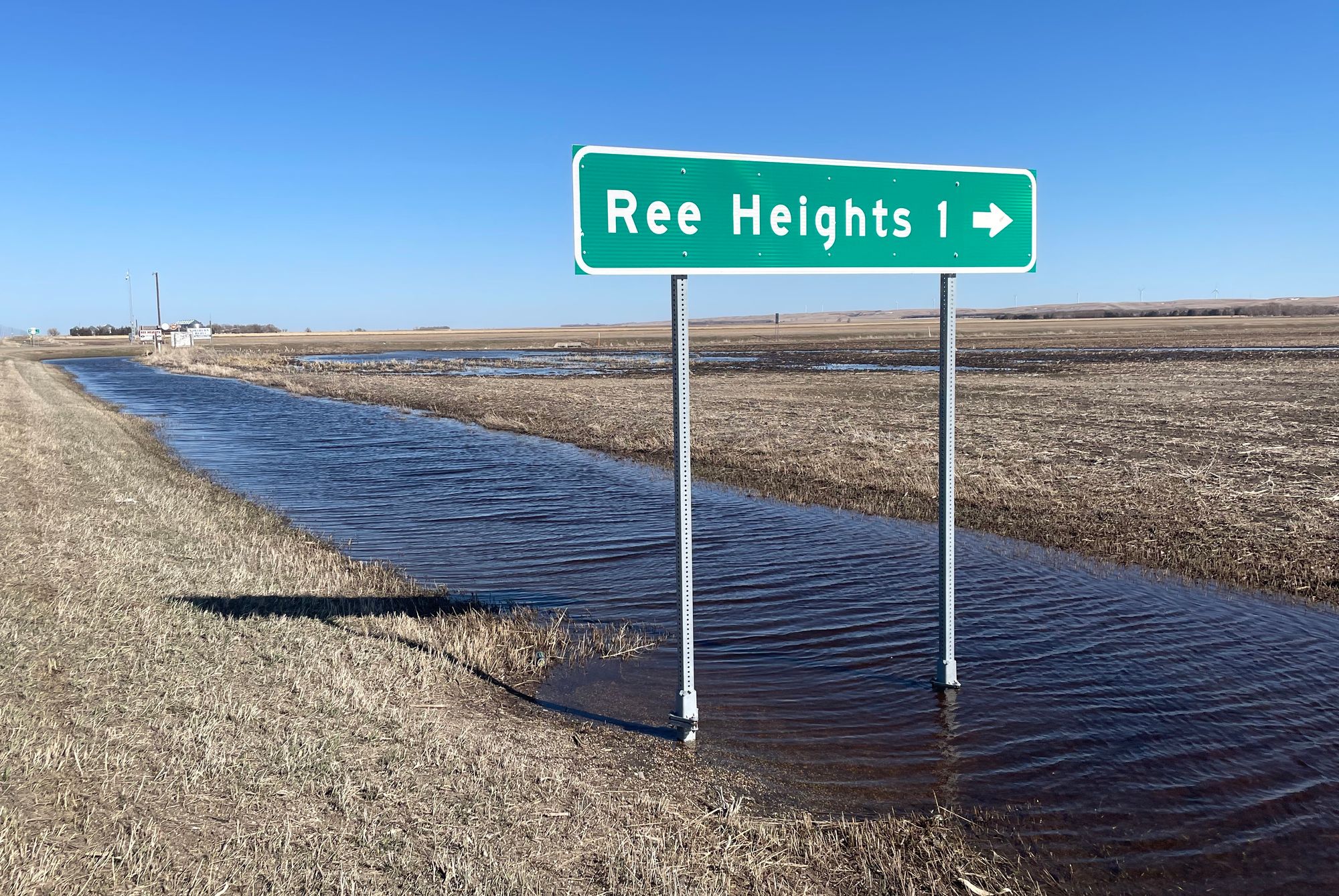
Extreme weather likely to continue
Schechinger said the data show that extreme weather is likely to continue, with disasters occurring with even greater uncertainty than in the past.
She noted that in some South Dakota counties, farmers received insurance payments for losses due to both drought and excess moisture in the same calendar year. Congress or the USDA could implement reforms to encourage farmers, for example, to reduce tillage or increase use of cover crops or use other "climate smart" practices to strengthen the land against the impacts of extreme weather caused by climate change, she said.
"We really think the crop insurance program needs to be reformed to help farmers increase their resiliency to extreme weather," Schechinger said. "The program itself is not bad. The issue is that it really promotes business as usual, which just is not going to work anymore with increasing intensity of extreme weather as the climate crisis worsens."
Schmitz counters that American farmers are known for being "some of the most sustainable farmers in the world," but he also acknowledges that more can be done to protect the land and water and increase resilience of farms to extreme weather events.
"Everybody agrees that the climate has been changing, and we're always looking to improve," he said. "For the most part, everybody recognizes that they better be taking care of what they have and making it better for the next generations."



